The fast-paced adoption of digital workplace technologies provides fantastic opportunities to improve digital employee experience (DEX). But it comes at a cost. Digital technology has a serious—and increasing—impact on our environment, with a carbon footprint of about 4% of global carbon emission (that’s more than the aviation industry’s 2.5% contribution).
Today, to reduce their environmental footprint related to digital technology, organizations depend on those who know how to best manage technology: IT.
Unfortunately, apart from more responsible purchasing processes or perhaps the occasional email asking employees to reduce printing habits, most IT teams do not have mature “Green IT” strategies. In most cases, that’s due to the lack of insight into where and how they can make a real difference.
This is where DEX management changes the game. By focusing on employees’ end-to-end digital activities, supported by deep technical data, you can implement impactful change while maintaining a great DEX environment.
Let’s take a look.
Measure what matters
At a high level, organizations need to understand their current level of impact. IT teams have access to a wealth of data about their infrastructure, any of which can help pinpoint areas of improvement.
But where do you start? And, more importantly, where can you make a difference?
To start baselining your green IT initiatives, you need a tailored set of quantified and actionable insights focusing on the main contributors to your carbon footprint. From there, you can set desired KPIs to baseline and start your improvement journey to take action.
Drive Greener Device Best Practices
What is the environmental impact of one employee device? What about 10,000? A small change can make a big difference when implemented at scale across the organization.
And sometimes, comparing your devices’ externality costs to other non-IT topics, like car emissions can strengthen your strategy or business pitch to leadership. For example, we helped this IT team realize that in only a few months, their devices released the same amount of CO2 emissions that 1,650 American cars would in a single calendar year!
Devices are one of the main culprits of unnecessary energy consumption, in part due to their users’ lack of awareness (or care). To reduce needless emissions, you can monitor some key device best practices, such as:
- Uptime: excessively—or continuously—running devices
- Power plan: wasted energy from a superfluous power mode
- Components: excessive performance from disk, CPU, network, or display

High-level monitoring of device best practices. Nexthink Green IT.
You can then decide how you want to home in on these areas.
For instance, you could deploy a remote action to automatically change a devices’ power plan. Or you could target and Engage with every user leaving their devices on after work (or on the weekend) to remind them to turn them off.
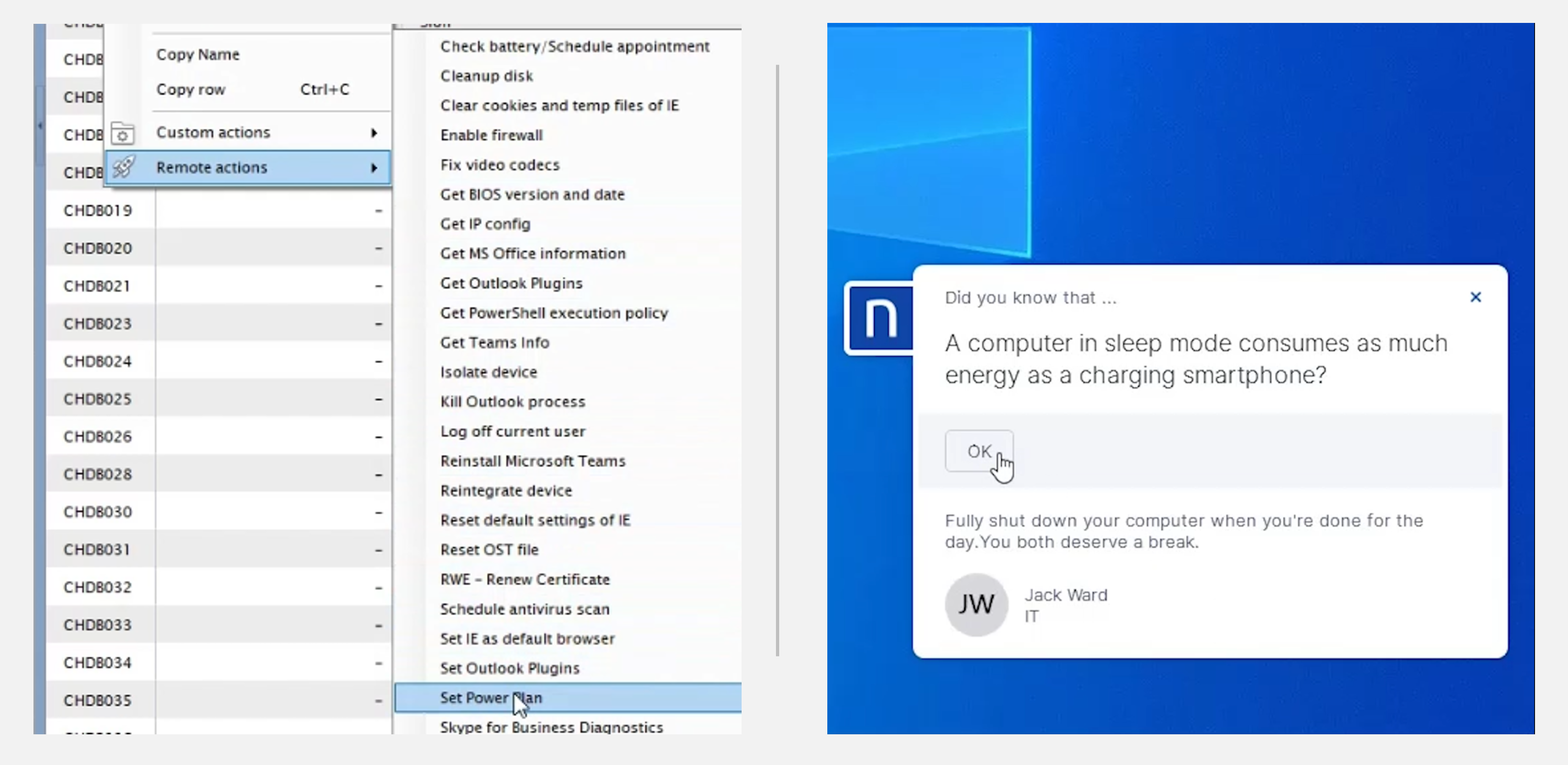
Remote action or employee engagement?
Once deployed, you can easily track how these changes have impacted your Nexthink Green IT KPIs.
Address Infrastructure impact with precision
Data centers alone consume about 1% of the entire global electricity demand today. What’s more, many organizations spend millions a year on cloud computing only to realize that more than half of their servers were underutilized. This not only creates unnecessary costs, but also contributes to hundreds of millions of tons of waste CO2 emissions.
From a Green IT perspective, it is crucial to focus on how you can optimize server usage and prevent redundancies.
You can track actual server usage and traffic to identify candidates to decommission. Or, you keep an eye out for server-intensive employee activities—such as heavy emails or unnecessary cloud storage—that might require educational and awareness tactics.
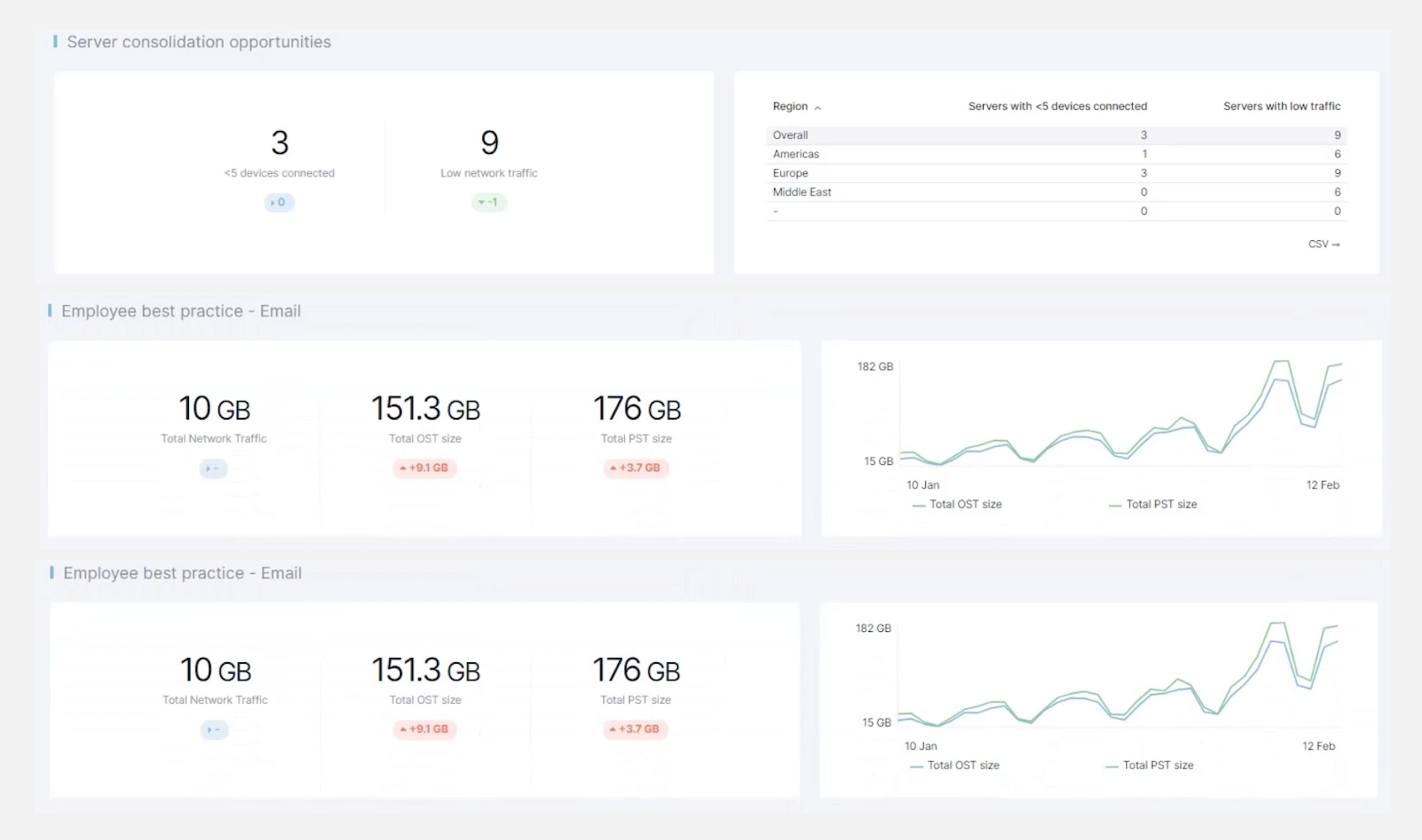
Monitor unnecessary costs and emissions in your infrastructure
Influence Employee Behavior
Green IT is not about restriction, it’s about education.
The area where you can have the biggest impact, hands down, is through employee influence. Targeted, contextual Engagement provides unparalleled benefits to Green IT activities by putting employees at the center. This is where Nexthink Engage truly shines.
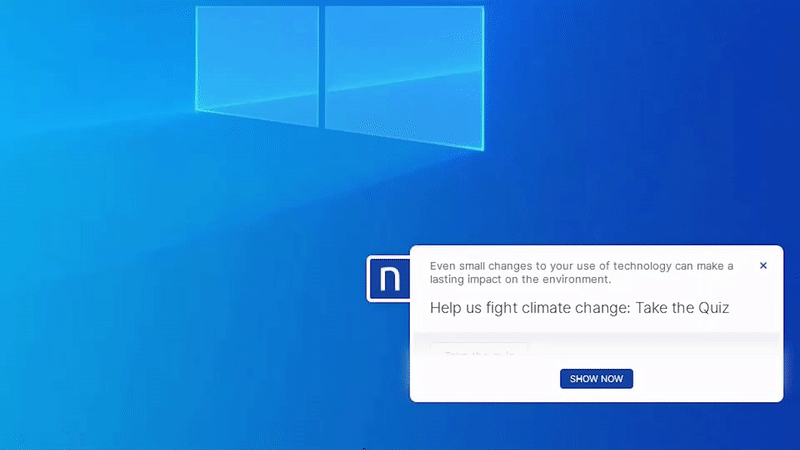
Firstly, you might teach them something they didn’t know. Secondly, they might start to apply new green best practices at work. Lastly, they might even apply some of what they’ve learned at home.
“
Imagine that you had left your laptop on standby for three weekends in a row. Now imagine a friendly, unobtrusive pop-up that didn’t simply inform you of this, but also pointed to what the impact of that might mean to the environment, and your own professional carbon footprint…”

Rainer Karcher
Global Director, IT Sustainability, Siemens
{Read More: How Nexthink Used Employee Engagement to Lower Our Carbon Footprint}
Rethink your hardware lifecycle
In 2019, each person contributed 7.9kg of global electronic waste, with only 1.7kg recycled. It gets worse when you consider that 80% of the energy expenditure of a laptop comes from its manufacturer.
Avoiding hardware replacements and increasing lifecycle is key for Green IT. Leveraging strategic hardware insight, you can:
- Monitor employees with multiple devices and their usage: Devices with low interaction might be worth taken back, recycled, or given to someone else instead of buying them a new one.
- Make fact-based decisions on devices to rebuild, replace, or recycle: Sometimes, replacing the battery or CPU will prevent having to order a whole new device.
- Favor green-labeled devices: Track how many green-labeled devices you have across your landscape to make better purchasing decisions for future replacements
- Use DEX Scores to extend lifecycle: Keep devices that are past their 3-year lifecycle, but still have a great device DEX Score (>7).
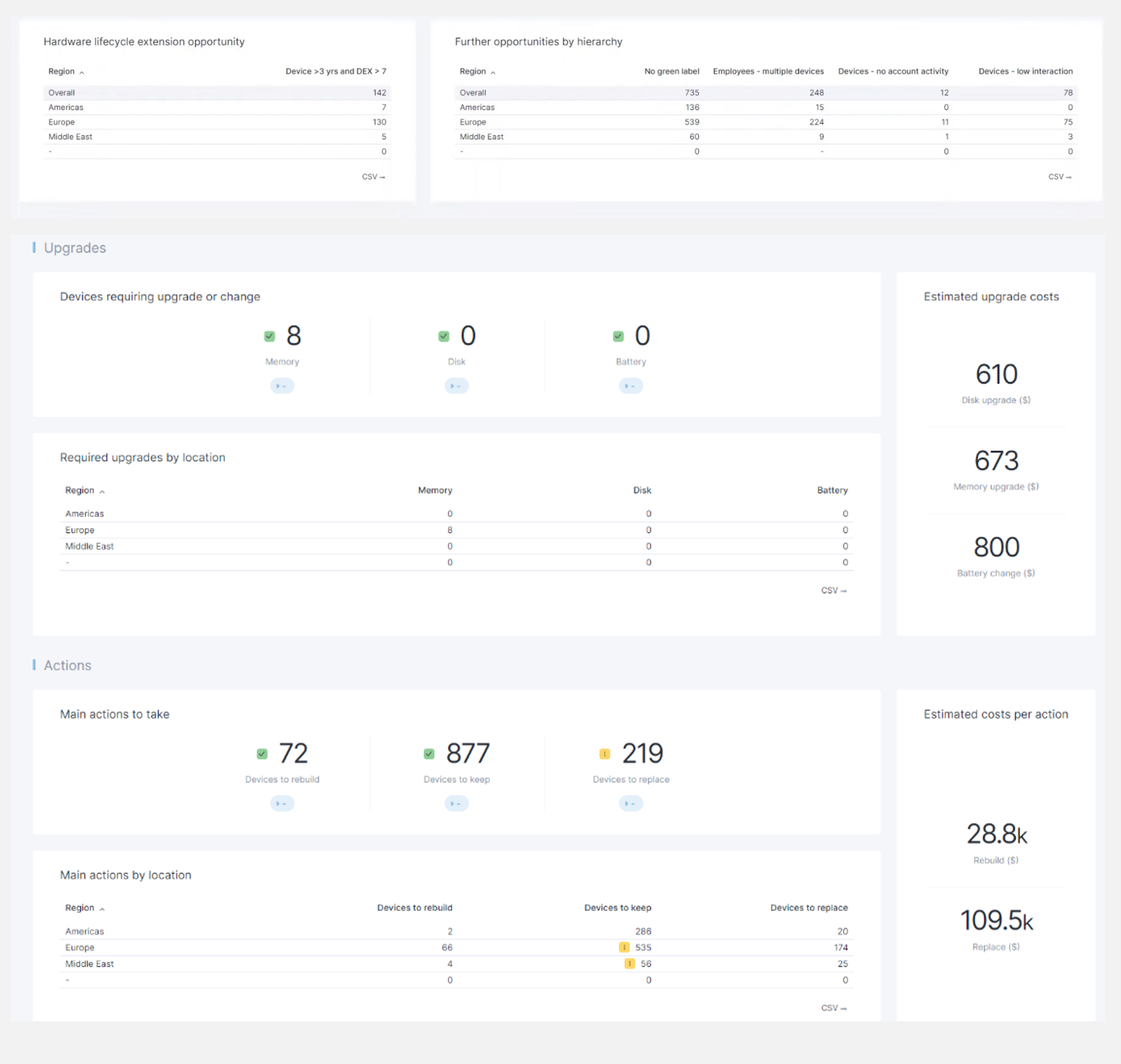
CO2 and cost reduction opportunities from intelligent hardware lifecycle strategies
{Read More: FHI360 Saved $400k on Their Hardware Refresh}
Leverage Persona-based provisioning
By standardizing employees’ digital workspace, you face potential energy and hardware waste.
There is no one-size-fits-all employee digital workspace – every employee is different and requires different hardware and software suites. For some employees, a tablet and a phone will suffice, while others might need a desktop with multiple monitors.
Leverage insights and metrics into your different employees’ personas (resource-heavy, virtualized, mobile, etc.) to provide them with the right hardware and software they need based on their profile and avoid over-provisioning with unnecessary technology.
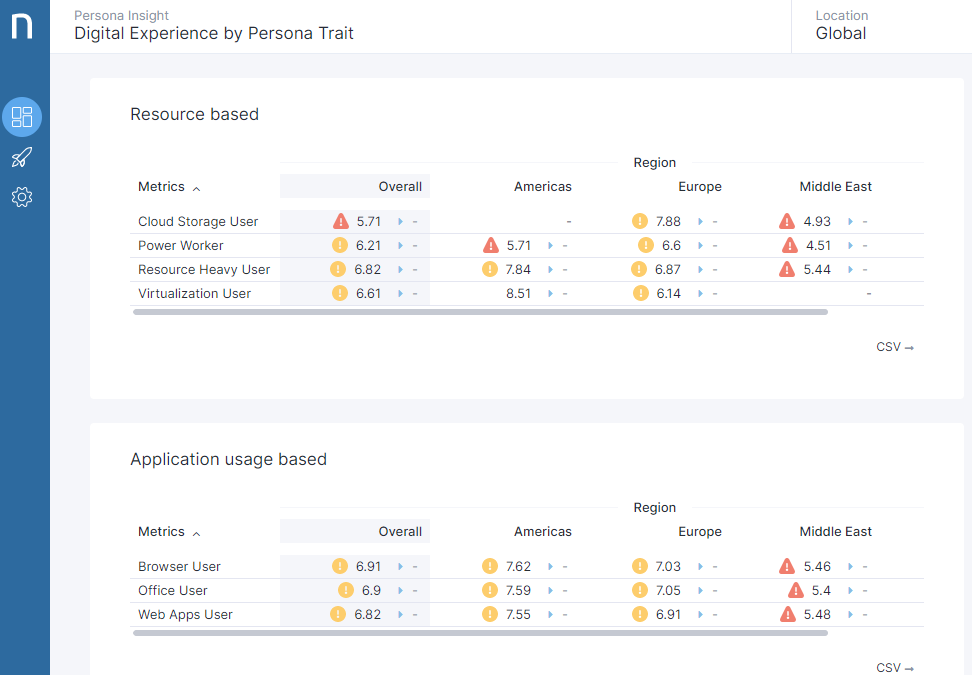
Provisioning the right workspace for the right people
Green IT and DEX with Nexthink
With Nexthink’s DEX management capabilities, you can easily implement Green IT strategies and measure the success of your corporate environmental goals.
What’s more, you can do it without compromising employees’ digital experiences and find significant cost reduction opportunities along the way.
____________
- Schedule a demo to find out more
- Are you a customer? Explore our latest Green IT solution
Related posts:
- Thinking Green: Can Nexthink Lower Our Corporate Carbon Footprint by Focusing on Employee Engagement
- Comparing IT Hardware Waste to Car Emissions
- Darker Backgrounds, Brighter Futures: Siemens’ Real-World Green IT
- 5 Best Practices to Motivate Employees to Go Green